One big quality that I have within me to run this organization is I’m a teacher’s son. My Father was a teacher and he is 92 years old now. The unsung hero in this world is the teaching community. We here in ICT Academy strive to make the unsung heroes into celebrated heroes.
Teachers are looked upon as Matha (Mother), Pitha (Father), Guru (Teacher) and then finally Theivam (God). Teachers travel in an unknown territory. The responsibility to create a good citizen lies with a teacher. When Laskshmi Narayanan started this organization he mentioned about the chain of organization that exists. The students, the teachers, the college management, the owners, and the industrialists are part of the process chain. Which is the weakest link in this chain, or the place where every focus should be applied upon? It is the teachers, not the students. Student is supposed to sit simply and take up the knowledge offered by the teacher.
Unity is strength. We need to join together to create a non-profit institution for the growth of this nation and that is where comes the power of unity. NITI Aayog recommends ICT Academy as the best practice and it has to be replicated across the nation.

B Anbuthambi
Executive Vice President,
ICT Academy
ICT Academy is almost 9 years old. This institution has been recognized by NITI Aayog as one of the best practices in India, following which we have just started our operations in Delhi this year. Delhi gives us good support by participating in the ICT Academy BRIDGE. Within the initial 5 years of instituting the Academy, we have taken measures to influence the academia in a big way.
Our key focus is to train the faculty members. All our initiatives are delivered through the faculty members of our member institutions. We strongly believe that ICT Academy’s core objective will be fulfilled only when every single faculty member in every institution of India is empowered with industry specific knowledge. So far we have trained more than 27,000 teachers in the last 8 years.
ICT Academy serves 1570 institutions across the nation in almost 25 states. Also, the Academy has partnered with 95 corporate majors who have invested their resources.
We thank the Ministry of IT - Government of India, AICTE, the Digital India initiative for supporting this event.
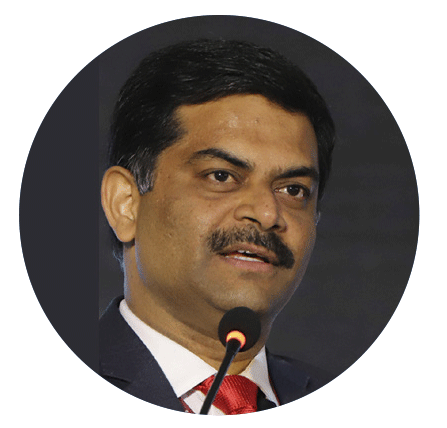
Dr N Saravana Kumar IAS
Joint Secretary - Ministry of Human Resource Development,
Government of India
This topic Future of Work originally started from 2006 on the release of the report of the World Economic Forum. The World Economic Forum came up with the report titled The Future of Jobs. It primarily focused on the impact of disruptive technologies on jobs. The focus point of this report was the question “What will happen ifunemployment is going to rise in future?” The report states that almost 65% of the children who are in primary school today are going to get into those jobs which do not exist yet. All of us would agree that technology is going to cause and is already causing disruption.
Job landscape is going to see a massive change. Where 37% of the jobs would require upgraded skill and if one is not able to embrace the new skills then one is out of the job and 9 % of today’s jobs will not exist. When talking about the Future of Work, there is going to be an interplay of three different factors. One is definitely the financial, the second one is the globalization, which is already happening and the third one will be the demographic change that is happening in our country.
India is one of the youngest countries; which is a challenge and also an opportunity. Similarly, the second one is the globalization that’s already happening and in the first decade of the 21st century, technology is moving rapidly fast and technology of course is helping globalization.
Disruptive technologies like artificial intelligence machine learning are exponential technologies and will have massive impact on many sectors like White Collar and Blue Collar jobs. Now we are seeing the new concept of gig economy. India is one of the leaders in this concept of gig economy. Employee will not be really going to regular office but they are available online. The second is the Uber model that is the Technology Aggregator model. The technological startups would be the 4th.
I will conclude with my favorite quote of author Peter Drucker, which states “the best way to predict the future is to create it”. To create the future we need to understand what is happening in the job landscape and how technologies are evolving and the need to adapt to it.
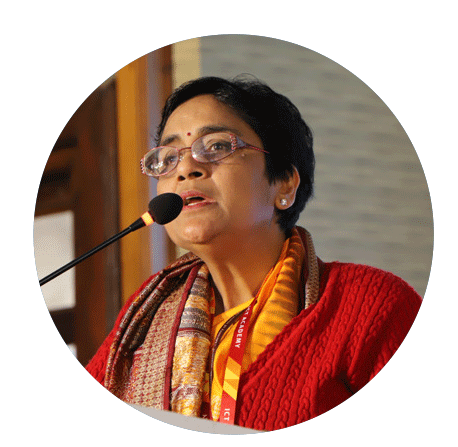
Sunitha Sanghi
Advisor,
NITI Aayog, Government of India
The subject of this conference is Future of Work; there are talks about AI, Machine Learning, one should really know what it means and how is it going to impact. I am from employment and skill development background; as well I am also looking after labor related issues. This becomes important for department like NITI Aayog, to look into what future of work means to policy vehicles. What AI and machine learning are doing for the labor market? There are many jobs which are going obsolete and many emerging which does not indicate that the net result will be negative. Many jobs are going obsolete because the processes are changing, the way you are doing it is different, and there are new technologies in place. It requires to re-skilling and retraining the workforce so that they are ready for the future jobs. It also means that it has implications not only over the labor policies but also in education policies, and skill development policies.
There is no country in this world which is not affected by this technological revolution, whether it is a developed one or not. Because of the technological revolution and aging process, these economies are facing a problem in shortage of ground workforce. That is why they are adopting more and more automated technologies. The wages are also going up, so there is an increase in the automation. We have an ecosystem that is built in terms of the skill development vision and ministry dedicated for the purpose. There is National Skill Development Corporation which is trying to bring the private sector on board and develop the synergy between the industries. Further, the reports from the industry say that our employability quotient of the people from the higher educational institutions is just about 41%.
What we need to concentrate is that we need to bring a convergence between the world of work and the education system. The best way to do that is the apprentice training, which should be promoted. We have put ourselves a target of training 50 Lakh people by 2022.
Addressing the future of work is posing before us; NITI Aayog has planned to go for the cluster development. Given the facts that there are small units being all over the country, we need to adapt the cluster approach. In cluster approach, we have several kinds of industries to build apprentices. When it comes to the bigger industries, let them share the larger proportion of the stipend than they are supposed to pay. That is the suggestion that we are trying to make out. There is also a need to have a process for hiring apprentices. Today, if any industry needs to hire an apprentice, they have to approach the Registrar, and it takes 6 months for the process to complete; we are already working to shorten this process time. With all the alternative strategies in place to develop the next generation workforce, we can easily face the future of work.
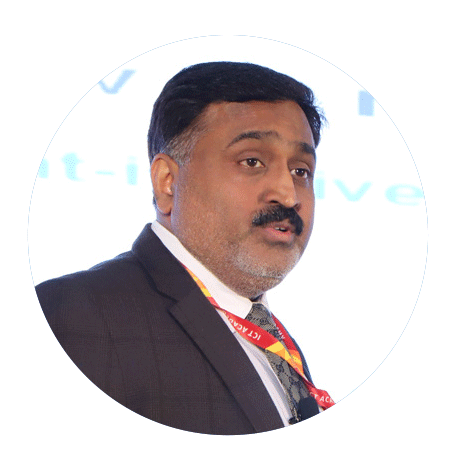
Prof Dr Rajendrakumar Anayath
Vice Chancellor,
Deenbandhu Chhotu Ram 38 University of Science and Technology
When we look at the current human development changes, there are three levels. One is the civilization change, and then comes the modern hi-tech world, where we are now and then there is the knowledge society. Five thousand years ago, when the first communication happened by Sakunthala who wrote love letter to Dhusyantha, on a lotus leaf, that’s the way how first communication happened. And then the writing came into existence by Sumerian and Egyptian people. In the last millennium, 700 years ago, first printing press was designed and that was the real explosion of knowledge. When we jumped from the modern high-tech world to the knowledge society, electronics is going to play a very big role. There are people who predicted that print will die but that has not happened, it is still there and it will continue. But the difference here is that those who resist change will lose. Those who repeatedly do an age old activity will be under pressure. So the question is what is the solution? Solution is a single word, which was coined 10 years ago, it is actually “Repurposing”. It means, anything you invent in the beginning with purpose, will change after a certain period. The best example is Archimedes, when he was told by the king to find out the purity of metal in the crown, he had no idea what to do. One day, when he was taking bath, he got an idea and shouted ‘Eureka’, the result of which emerged the buoyant theory and the replication of this theory was only to save his life. But the same principle was repurposed and the theory has changed the whole world.
This is just to summarize the statements of what people were talking about digitization and disruption. The world’s largest car rentals company owns no taxi, world’s largest communication provider has no infrastructure, world’s largest retailer Ali Baba has no inventory, world’s largest media provides no content, world’s fastest growing bank actually has no money, and world’s largest movie provider Netflix owns no cinemas. So the digital disruption is already happening. And today’s change is that, information is available for anyone, anywhere, anytime and for any user with any device for anyone to access. This is the current scenario where we are living.
In this disruptive world, we continue to do the same things but in a different way. Innovation has helped us to do things differently. Inspired thought is what that ignites ambition. Dream is not something which you get in sleep, but which does not let you to sleep.

Dr Sandhya Chintala
Vice President, IT-ITes Sector Skills Council,
NASSCOM
There is disruption actually happening today and we are required to prepare for it. Talking about the digital disruption, future of works, jobs and skills are actually impacted very intensively by 5 factors. Much has been already discussed about this. Now the scenario is such that the last few years there have been a change which is actively happening in the global scenarios. The return of the geopolitics and the power of disruptive technologies are reshaping. How do we re-invent the learning ecosystem itself, is what we need to think. We need to put a blueprint of action for us to take away today. With the support of formal and non-formal players and with the support from major stakeholders which will be government both central as well as state, we need to find a solution for this problem. The sector we are now talking about is the IT industry. Today we stand tall about 4 million direct employees and about 20 million indirect employees from this industry that was started about 26 years ago, now owns about 96% of the human resource and 95% of the revenues. There is an ecosystem out here in India that comprises about 16,000 companies of which 2,500+ are members of this association of IT service and product companies; having said this, we were catering over the last few years to scale as a model in the ecosystem of human resources. On the other hand we are looking for machines that will be working as co-workers, and hopefully, we are in a situation to tackle this.
Looking at the huge IT industry, such a program should be designed such that it will work well for the entire ecosystem. Having said the major architectural design which we hope will come to this country is that - the learning will be in the NSQF (National Skills Qualification Framework) levels, which will be available for companies to re-skill. Universities will offer both skilling and re-skilling programs, and traditional trainers will scale and rescale the models. Altogether we should be able to enable a new India. Having said this, we can assure that the old job roles are not going to be swept off because of the future of work, but there needs to be a fast pace re-skilling that is required and is critical for the nation to flourish.
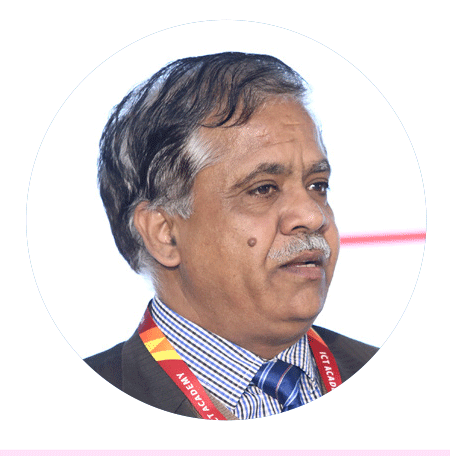
Dr Rajeev Sharma
Scientist-D, ICPS Division - DST,
Ministry of Science & Technology,
Government of India
This is an in-detail round-up about the Interdisciplinary Cyber Physical Systems (ICPS Division) The following are the background of the program
- DST initiated ICPS programme as an R&D initiative in August, 2016
- Hon’ble Prime Minister announced it in 104th Indian National Science Congress held at Tirupati in Jan, 2017
- Committee of Secretaries’ (CoS) Vigyan 2030 vision document identified ICPS as one of the National Missions and directed DST to generate Detailed Project Report (DPR) and Economic Finance Committee (EFC) memo by June/July, 2017
- Through the national workshop, DST generated a concept paper as an initial document to work on the objectives of the program. The objectives are:
- To promote and foster R&D in Cyber Physical Systems (CPS) and related areas like Robotics, Artificial Intelligence, Digital Manufacturing, Deep Learning, Quantum Communication and Internet of Things.
- To develop technologies, prototypes and demonstrate associated applications pertaining to national priorities.
- To enhance high end researchers base, Human Resource Development (HRD) in these emerging areas.
- To establish and strengthen the international collaborative research for cross fertilization of ideas.
- To enhance core competencies, capacity building and training to nurture innovation and Start-up ecosystem.
Scheme: PI driven Individual R&D projects and Multi-institutional consortium based cluster mode networked projects.
Theme areas for developing systems for practical applications in the areas of:
1. Water 2. Energy 3. Healthcare 4. Agriculture 5. Infrastructure 6. Transport 7. Security of Physical Systems.
ICPS programme rightly fits into National initiatives like:
- Digital India, Make-in-India, Industry 4.0, SMART Society 5.0, Skill India and Start-Up India.
- The ICPS Programme facilitates and caters to these national initiatives by developing India in specific core technologies, human sources development and develops advanced skill sets and will feed into Innovation and Start-up ecosystem of the GoI.
Proposed ICPS programme and Scope
- The CPS and associated streams and on all aspects of ICPS research in India will be coordinated under the umbrella of ICPS programme.
- Consequently, solidification of the accompanying central innovations are required, especially, Cyber Security, IoT System Architecture Technology, Data Science & Predictive Analytics, Artificial Intelligence (AI) and Machine Learning (ML), Device Technology, Network Innovation and Quantum Computing etc.
Major Activities include the following
- R&D PROMOTION/Technology Development through expert driven CENTRE OF EXCELLENCE, a dedicated centre in CPS.
- HRD and CAPACITY & TRAINING through Fellowship Based UG/PG, PhD, Post-Doc, Short-term trainings and skill development.
- ENTERPRENEURSHIP, INNOVATION AND START-UP ECOSYSTEM: To enhance core competencies, capacity building and training to nurture innovation and start-up ecosystem.
- INTERNATIONAL COLLOBORATIONS: To establish and strengthen the international collaborative research for cross fertilization of ideas.
The following are the deliverables
- Tools and technologies for industry and Central and State Governments
- Skill development to the tune of 10,000 students and increase their job potential at national and international job markets.
- Creation of Jobs for at least 50,000 people through startup companies
- Operational systems, prototypes development and technologies transfer through directed research.
- Connecting academic research to industry and startups
- Setting up of 25 CoEs in the area of ICPS.
- Increased researchers’ base in CPS and related fields to be at par with other countries in terms of knowledge generation, management and economic growth.
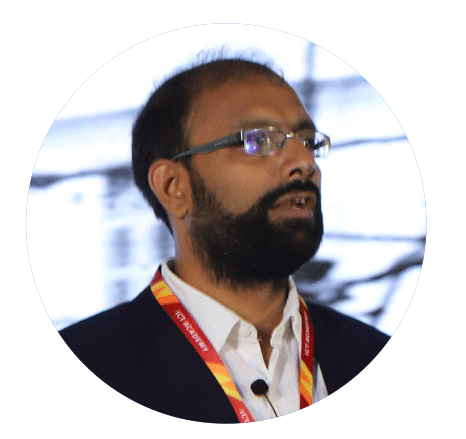
Pundi Sriram
Co-founder and Head,
STEP - The Hindu Group
STEP is a division of The Hindu Group that is focused on English language training and assessment and as today the power of English is huge as we still operate in a global world where empowering Indians in English is a key part of success for them in the workplace. That’s the mission we are here to take on. And as part of the journey, we thought one of the key ways to skill youth in India is through communication skills and English language development, which has become much more relevant in today’s world. As we look into the future of work, things are only going to get much more complex. The world around us is changing and there are new technologies evolving day by day.
New jobs are created every day and equally old jobs are going away. This is one of the aspects that people have been talking about in terms of future of work. Jobs in the middle, white-collar clerical jobs or even some blue-collar jobs are getting automated; for instance, something similar to robots moving around in the Amazon warehouse. Low skilled blue-collar tasks and low skilled white-collar tasks are going away. The middle stratum is getting squeezed. So the jobs in the future, we think, are the jobs that are going to be more cognitively demanding, jobs which require more thinking and brain power. It’s no longer just, “I know ow to do this task, and I am going to do it” Do you have the critical thinking skills that we were talking about, problem solving skills, skills to collaborate? Between critical thinking skills, problem solving skills, and collaboration, there is one underlined theme – in my view, that is language. To think critically, you must have the capacity to understand; what is being said, is absorbed as information, processed it and interpreted it in different ways. Language is the basic tool which human beings use to interact with each other.
Cognitive development happens through language. We must make sure people who are in college are equipped with high quality general language. Not just specific skills that are required for specific situations, but language skills that are required to operate in whatever environment they find themselves in the future. We have to create an environment where English becomes that common medium of conversation, not just a medium of instruction. There is also access to pretty good learning tools online, and in locations where good quality teaching and training is not available, we have technology today that can help you get there. Today we are seeing the future of work is already here in some ways. One of our own challenges is that we don’t find enough people to do English language testing and training.
We have products where we are essentially recording the audio, student is having a conversation with his phone or computer, all of this is recorded and evaluated in real-time. By using the latest technologies, the English language examiner is eliminated from the examination process. This is the kind of technology that is available. Just like English language examiner is going away, other jobs will evolve and emerge and I think English language communication will be a critical part of preparing our students for that future.
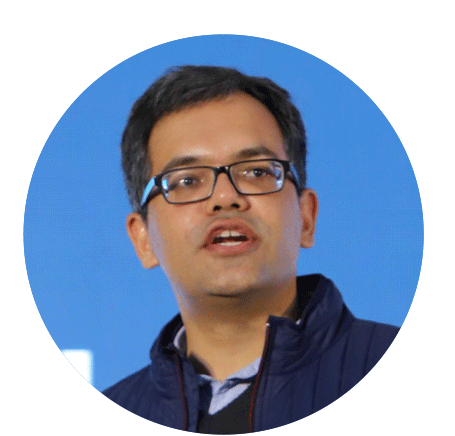
Digbijoy Shukla
Startup Ecosystem Team Lead - India
Amazon Internet Services (P) Ltd
There has never been a time of greater promise, or one of the greater potential perils. Today’s decision makers are however too often trapped in traditional, linear thinking, or too absorbed by the multiple crises demanding their attention, to think strategically about the forces of disruption and innovation shaping our future. Invention comes in many forms and at many scales. The most radical and transformative of inventions are often those that empower others to unleash their creativity to pursue their dreams. The culture of innovation is bound by the following factors
- Customer Obsession - “Start every process with the customer and work backwards.”
- Long-term Thinking - “Be stubborn on the vision but flexible on the details.”
- If you want to be inventive, you have to be willing to fail, “We are willing to go down on a bunch of dark alleys and occasionally we find something that really works.”
- You have to be willing to be misunderstood for a long time, “We are very comfortable being misunderstood.”
Amazon continues to impress the Wall Street. Thanks to the Cloud and Prime. It all happened only because of these two things. Amazon also works on translating the sign language to speech that focuses on the following:
- Bluetooth enabled gloves
- Records hand positions and movements
- Uses deep learning to match gestures with words
- Text to speech
The pace of innovation is moving in a new capacity. And we continue to iterate at a faster clip than anybody. In 2014, we launched 516 significant services and features; in 2015 it was 722, last year 1,017, and this year over 1,300 (over 3 new features/day). So, pace of innovation continues to accelerate, which is extending the gap in functionality when you study it closely.
We could also proudly tell that Coursera uses AWS to power online learning for over 3 million students worldwide.
The following are the solutions and benefits provided by AWS to Coursera
- Able to scale handle a 75% spike in traffic without degradation of user service or experience.
- Indexed over 2.5 million documents with Amazon Cloud Search.
- Able to scale RDS instances in minutes to handle over 10 billion inquiries.
- Can scale clusters in minutes with Amazon Redshift to analyze student data.
- Using Amazon EC2, Amazon RDS, Multi-AZ, Amazon CloudSearch, Amazon SQS, Elastic Load Balancing, Amazon CloudFront, Amazon Redshift, and Auto Scaling.
- Pedagogy had been locked in the mode of the 18th or 19th century classroom with the educator acting as a lecturer - suddenly and finally, it is modernizing via Internet or digital-aided pedagogy of the 21st century. AWS Educate is central to Amazon’s education and workforce development strategy, but it will only reach our most profound goals through a deep collaboration with educational institutions.

Tej Paul Bhatla
Business Unit Head
Tata Consultancy Services
Information Technology is the largest employer as far as India is concerned, for almost a decade, which has opened up a variety of opportunities. The industry is going through an evolution ever since we started using tools.
Industry 1.0 developed tools to aid workers. As production capabilities increased, businesses also grew from individual cottage owners taking care of their own needs to organizations with owners, managers and employees serving customers.
Industry 2.0 witnessed the development of a number of management programs that made it possible to increase the efficiency and effectiveness of manufacturing facilities.
Industry 3.0 saw the invention and manufacture of electronic devices, such as the transistor and, later, integrated circuit chips, made it possible moving towards creating fully automated individual machines to supplement or replace manual operators. This period also spawned the development of software systems to capitalize on the electronic hardware.
Industry 4.0 connects the Internet of Things (IoT) with manufacturing techniques to enable systems to share information, analyze it and use it to guide intelligent actions. It also incorporates cutting-edge technologies including Additive Manufacturing, Robotics, Cloud, Artificial Intelligence and other cognitive technologies, advanced materials, and augmented reality, according to the article “Industry 4.0 and Manufacturing Ecosystems” by Deloitte University Press.
IT world is becoming very complex with new and upgrading language. To innovate something new we need to possess different kinds of knowledge and understand the concept of technology. The bright side is that we can create new world if we know the language and technology. Since most of the companies depend on the freshers, it’s the colleges’ responsibility to educate the young generation in these languages.

Anil Kumar Pipal
Head - HRD Division,
Ministry of Electronics & IT,
Government of India
The Key activities handled by MeitY (Ministry of Electronics and Information Technology) are the following
- Matters relating to HRD to ensure availability of trained human resources for the manufacturing & service sectors of electronics and IT industry;
- Identify gaps emerging from the formal sector; Planning & organizing the implementation of programmes/projects in formal and non-formal sectors for meeting these gaps.
- Planning and formulation of strategy documents pertaining to HRD for future activities.
Major HRD initiatives by MeitY
PG Level:
- Scheme for enhancing PhDs in ESDM and IT/ITeS [PhD Scheme]
Graduate level / Niche Area:
- Scheme for setting up of Electronics and ICT Academies for faculty development (07 Academies) - Rs.148 crore
- Information Security Education and Awareness (ISEA) Phase-II - Rs.98.06 crore
- Chip to System (C2S) for VLSI Design
- Capacity building in the area of Electronic Product Design and Production Technology
Vocational, Skill Development:
- Scheme-1 : Skill Development in ESDM through 8 States/UTs - 90,000 persons, Outlay : Rs.113.77 crore;
- Scheme-2: Additional 3.28 lakh persons, Rs.411 crore under Digital India
- Promotion of Sector Skill Councils – Electronics, Telecom, IT/ITeS Strengthening of NIELIT- Create facilities in backward areas(esp.in NE)
For grassroots level : Digital Literacy for masses
- NDLM/DISHA for 52.5 lakh beneficiaries @ Rs.97.06 crore & @ Rs. 380 crore
- PMGDISHA: 6 crore beneficiaries from Rural India at an outlay of Rs.2351.38 crore
The following coordination are undertaken with Sector Skill Councils
- Industry-led bodies setup for skill development
- IT/ITeS Sector Skills Council- setup by NASSCOM
- Electronics Sector Skills Council - setup by ISA, ELCINA, CEAMA, IPCA, MAIT
- Telecom Sector Skills Council setup by COAI, ICA, TCOE
- Defining National Occupational Standards for Industry job roles.
- Develop curriculum packages duly recognized by Industry
- Engagement & Capacity building of Vocational Teachers
- 3rd party Assessment & Certification
- Automotive Sector Skill Council for Automotive Electronics
- Health Sector Skill Council for Medical Electronics
The current state of technology is that it will always change; technology is never constant, it’s dynamic. I always use to wonder if work came first or technology came first. Work and technology have a recursive relationship but the ultimate concept is to improvise productivity and efficiency. We have a non-intervention technology with the future of work here.

Niraj Prakash
Senior Director - Digital Innovation & Digital India Solution Consulting,
Oracle India
Technology plays a major role in increasing the productivity of any work. The change in technology is in exponential manner. This inevitable cycle is a virtual cycle which will give us opportunity which leads to Future of Work.
We have statistics which shows, for every job that is lost almost 2.4 new jobs are created. With the help of the technology we can mimic the brain into artificial intelligence and with the help of the artificial intelligence we can analyze the brain.
Technology growth is far advanced that the data is growing day by day in this modern world. Data is fueling the new and upgrading technology which is the current state of technology.
Now the Cloud Technology is available as a retail product. Conception model is completely flexible with new innovation and security to work. According to me the future of work belongs to those who get the balance of work in the correct place. There are two aspects that describe the future of work, technology and domain. With the help of technology, domain works and without the domain, technology is empty. Future of work is to use technology along with the domain for a bright future.
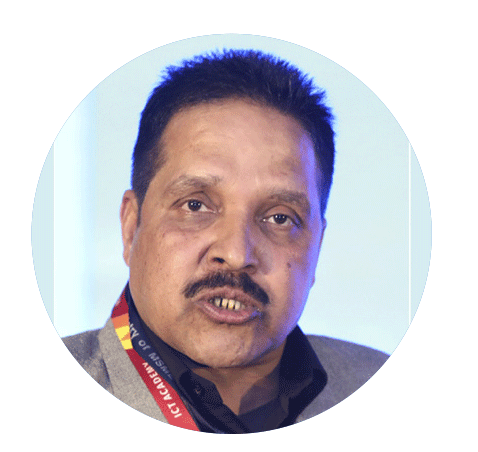
D C Sahu
Deputy Director - MSME Development Institute,
New Delhi
When we take Future of Work into consideration the young generation has two options to adopt; either to focus on services field in the government or private job with salary or become an entrepreneur and startup a own enterprises. Government of India is providing us a lot of schemes and opportunity for the young entrepreneurs to shine and startup enterprise. A huge amount is allocated for young and existing entrepreneurs which is unaware and not utilized by people. I take this opportunity to explain some of the government scheme which will be very useful for the entrepreneurs.
Manufacturing Competitiveness Programme (NMCP): The Government has announced formulation of National Competitiveness Programme with an objective to support the Small and Medium Enterprises (SMEs) in their endeavor to become competitive and adjust the competitive pressure caused by liberalization and moderation of tariff rates.
The major objective is to increase the competitiveness of MSME sector. This is a key initiative for survival of MSMEs in domestic & international markets and implementation with Public Private Partnership
Lean Manufacturing Scheme: Under the Scheme, MSMEs will be assisted in reducing their manufacturing costs, through proper personnel management, better space utilization, and scientific inventory management, improved process flows, and reduced engineering time
Similarly, we have Design Clinics Scheme, Technology and Quality Upgradation Support, Digital MSE Scheme, Business Incubators (BI), Marketing Assistance and Technology Upgradation Scheme for MSEs, MSE-CDP Programme, and MSME-MDA Scheme & International Cooperation Scheme and so on which will create a huge change in many people’s life.